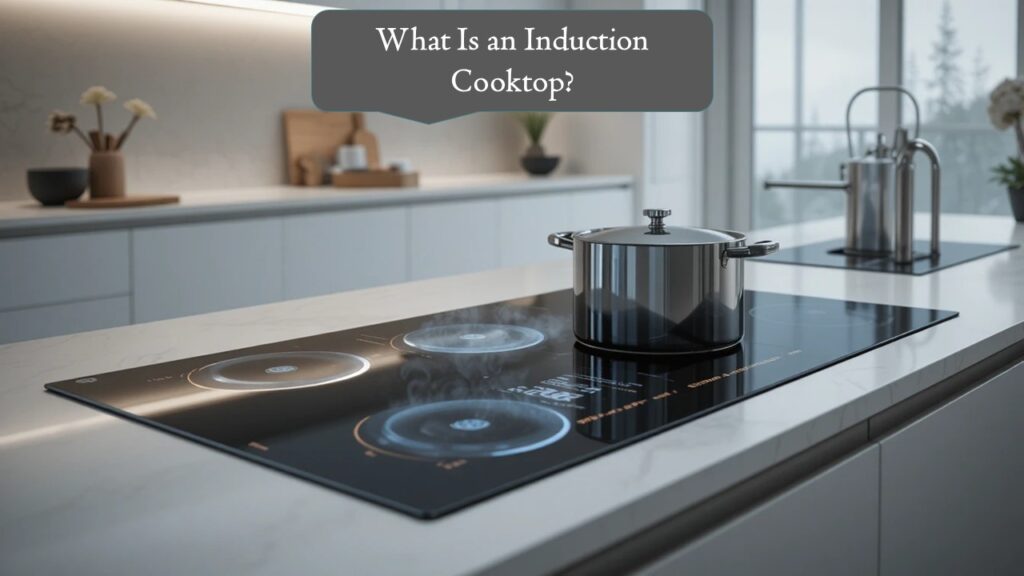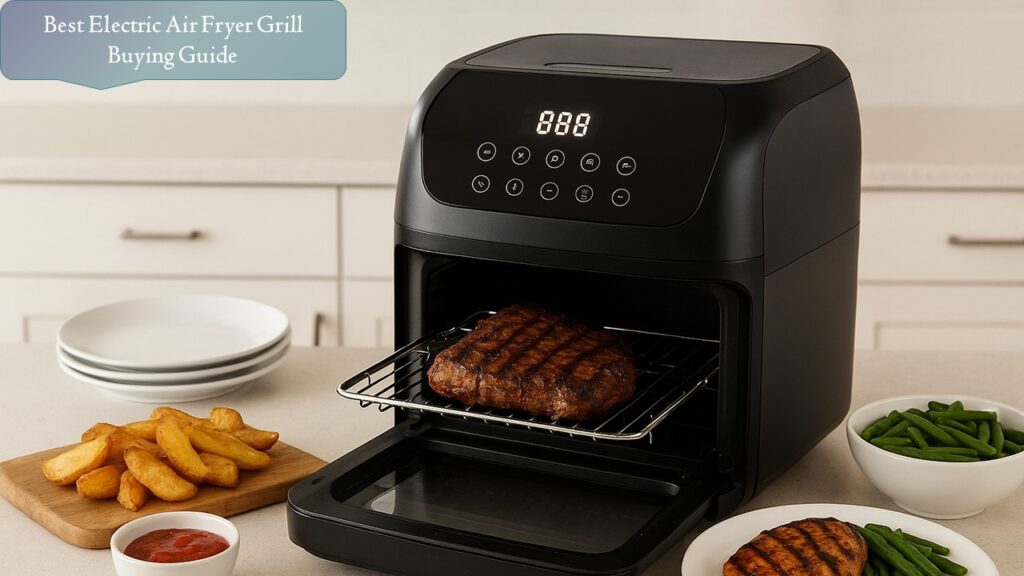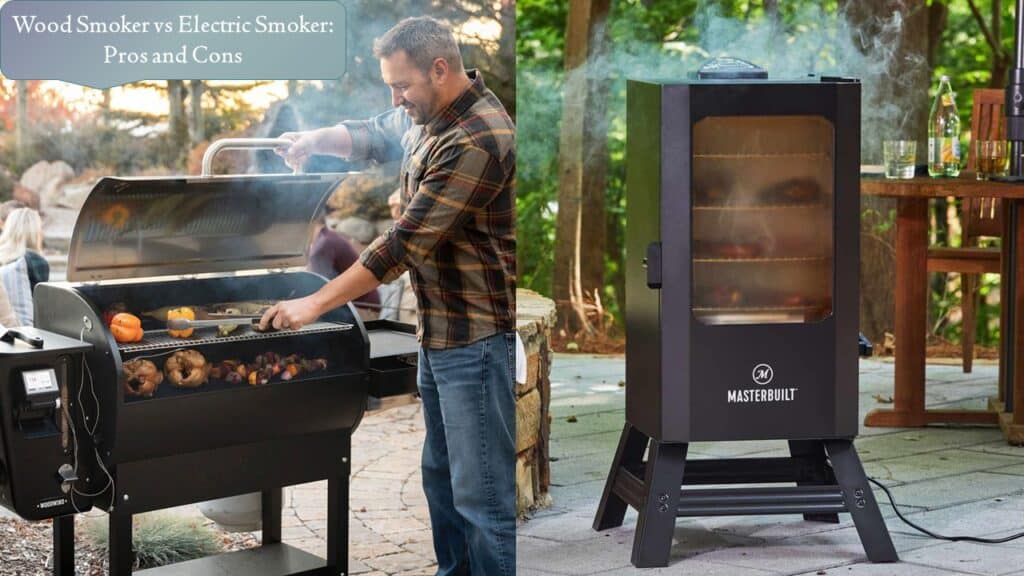The kitchen has always been the heart of the home — a place where innovation and tradition meet. In recent years, one of the biggest shifts in home cooking has come from the rise of induction cooktops. Sleek, efficient, and surprisingly smart, induction cooking is quickly replacing traditional gas and electric stoves in many modern kitchens.
But what exactly is an induction cooktop, how does it work, and why are so many people switching to it? Let’s dive into everything you need to know before deciding if this futuristic appliance belongs in your kitchen.
Understanding the Basics: What Is an Induction Cooktop?
An induction cooktop is a type of stove that uses electromagnetic energy to heat your cookware directly, rather than heating the surface of the stove itself. Unlike traditional gas or electric stoves that rely on an open flame or hot coils, induction cooktops use magnetic induction to create heat inside the pan.
This means:
- There’s no visible flame.
- The cooktop stays cool to the touch (except where the pan sits).
- Heat is transferred instantly and efficiently to the food.
Essentially, you’re cooking with magnetic energy, not fire or radiant heat. The result is faster, safer, and more precise cooking.
- MAKE ADJUSTMENTS ON-THE-FLY – Want hotter temperature or need to cook it longer? No problem. Simply adjust on-the-fly...
- Powerful Function:Electric cooktop 30 inch has 9 power levels. Choose the power level according to the food you are...
How Does Induction Cooking Work?
To understand how induction works, imagine a simple scientific process at play:
Beneath the glass surface of an induction cooktop lies a coil of copper wire. When you turn on a burner, an alternating electric current flows through this coil, generating a magnetic field.
When you place a ferromagnetic pan (like stainless steel or cast iron) on that spot, the magnetic field induces tiny electric currents — known as eddy currents — within the metal of the pan. Those currents create resistance, which produces heat directly inside the pan.
So the cookware itself becomes the heat source. That’s why you’ll notice the glass surface of an induction cooktop doesn’t get hot like a gas or electric stove. The heat is localized within your cookware — not the appliance.
- PORTABLE INDUCTION BURNER: Duxtop induction cooktop uses 110/120 V 15 amp electrical outlet–standard in all North...
Key Components of an Induction Cooktop
An induction cooktop might look minimalist, but it’s a piece of highly engineered technology. Here are its main parts:
- Glass Ceramic Surface – Smooth and easy to clean, it allows the magnetic field to pass through while staying cool.
- Copper Coils – Located beneath each burner area; these coils generate the electromagnetic field.
- Power Electronics – Convert electricity into the right frequency and voltage to power induction heating.
- Control Interface – Touch-sensitive controls or knobs to adjust temperature, timers, and settings.
- Safety Sensors – Detect if cookware is compatible, monitor overheating, and shut off automatically if necessary.
- Simplified Cooking Modes: Dive into a seamless cooking experience with our induction cooktop's three preset modes:...
Benefits of Using an Induction Cooktop
After using both gas and induction in my kitchen, I can say the difference is night and day. Here are the top reasons people love induction cooktops:
-
Unmatched Speed
Induction cooktops are incredibly fast. You can boil water in less than half the time it takes on a gas stove. Since heat is generated directly inside the pan, there’s no waiting for burners to warm up — you get instant heat.
-
Precise Temperature Control
Induction allows for precise adjustments — whether you’re gently melting chocolate or searing a steak. The power levels respond instantly to your changes, giving you total control over the cooking process.
- MAKE ADJUSTMENTS ON-THE-FLY – Want hotter temperature or need to cook it longer? No problem. Simply adjust on-the-fly...
- Requires induction compatible cookware. If a magnet sticks well to the bottom of the pan and is at least 5 inches in...
-
Energy Efficiency
Traditional gas and electric stoves lose a lot of heat to the surrounding air. Induction cooktops, however, are 90% energy-efficient, as almost all the energy goes directly into heating the pan. This means lower electricity bills and a cooler kitchen.
-
Enhanced Safety
Since the surface doesn’t get hot, burns and fire hazards are greatly reduced. Plus, most induction cooktops won’t turn on without proper cookware, which is a lifesaver for households with kids.
-
Easy to Clean
Anyone who’s ever scrubbed burnt food off gas grates knows the struggle. Induction cooktops have a flat glass surface — no grates, no burners, no mess. Spills don’t bake onto the surface, so a quick wipe is all it takes.
-
Modern Aesthetics
Let’s be honest — induction cooktops look stunning. The smooth, glass design gives your kitchen a sleek, high-end look, blending beautifully with contemporary appliances.
- Advanced Ceramic Glass Technology for Unmatched Durability: Discover a cooking surface designed to withstand the rigors...
Drawbacks to Consider
While induction cooking is impressive, it’s not without its limitations.
-
Cookware Compatibility
You’ll need magnetic cookware — meaning pans made of cast iron or stainless steel that can attract a magnet. Aluminum, copper, or glass cookware won’t work unless they have a magnetic base.
-
Initial Cost
Induction cooktops are usually more expensive upfront than traditional stoves. However, their energy savings and durability can offset this cost in the long run.
-
Electrical Requirements
High-powered induction cooktops may require special wiring or outlets, so some installations can involve an electrician.
-
Buzzing Noise
At high settings, some induction models emit a faint buzzing or humming sound, especially when using lightweight cookware. It’s not loud, but it’s noticeable.
How to Tell If Your Cookware Works on Induction?
A simple magnet test does the trick.
If a magnet sticks firmly to the bottom of your pan, it’s induction-compatible. If it slides off or barely sticks, it won’t heat up properly.
To make life easier, many manufacturers now label their cookware as “induction ready.”
Comparing Induction to Other Cooktops
| Feature | Induction | Gas | Electric Coil/Glass |
| Heat Source | Electromagnetic energy | Flame | Electric resistance |
| Efficiency | ~90% | ~55% | ~70% |
| Speed | Fastest | Moderate | Slower |
| Safety | Very safe | Open flame risk | Hot surface risk |
| Cleaning | Easiest | Difficult | Moderate |
| Cookware Needs | Magnetic only | Any | Any |
| Aesthetic Appeal | Modern, sleek | Traditional | Basic |
| Installation | Electric only | Gas connection | Electric |
Are Induction Cooktops Worth It?
If you value speed, precision, energy efficiency, and modern design, then yes — induction cooktops are absolutely worth it. They make daily cooking easier, safer, and more enjoyable.
However, if you often use specialty cookware (like copper pots or glass pans) or live in a place with unreliable electricity, a gas stove might still be more practical.
In short:
- For modern urban kitchens → Induction is the future.
- For rustic or high-heat flame lovers → Gas still has its charm.
Maintenance Tips for Induction Cooktops
- Use Flat-Bottomed Cookware – Ensures maximum contact and even heating.
- Wipe Spills Quickly – Prevents residue from hardening.
- Avoid Scratches – Lift pans instead of sliding them.
- Use Induction-Safe Mats – Silicone mats can protect the surface while cooking.
- Unplug Before Cleaning – Always ensure the unit is cool and disconnected before wiping.
With proper care, an induction cooktop can last 10–15 years without losing performance.
Final Thoughts:
The induction cooktop isn’t just another kitchen trend — it’s a major leap forward in cooking technology. By heating the pan directly through magnetic energy, it delivers faster cooking, precise control, and unmatched efficiency, all while keeping your kitchen cool and clean.
While the upfront cost and cookware requirements may make some hesitate, the long-term benefits — from energy savings to enhanced safety — make it a worthy investment for any modern home.
If you’re building or upgrading your kitchen, choosing an induction cooktop means stepping into the future of cooking — one that’s smarter, cleaner, and undeniably more efficient.













